Monitor Our Seas, Save Our Seas
—
The other day a friend asked me whether I worked for Save Our Seas or ‘Monitor Our Seas’, the joke being that with all the monitoring we do, we’re not really saving anything. I laughed but, it got me thinking. For many people, meaningful marine conservation has a certain look. It’s aiding entangled or stranded marine life, or saving dolphins from captive swim programs. It’s photogenic and tangible. But this approach is on an individual level. Saving one stranded whale or one entangled sea turtle, it’s a case by case basis rather than examining threats as a whole. When we’re faced with broad-reaching, ecosystem level threats such as climate change or overfishing it’s harder to capture what ‘saving’ is in simple images or stories. Saving, in some ways, turns into monitoring.
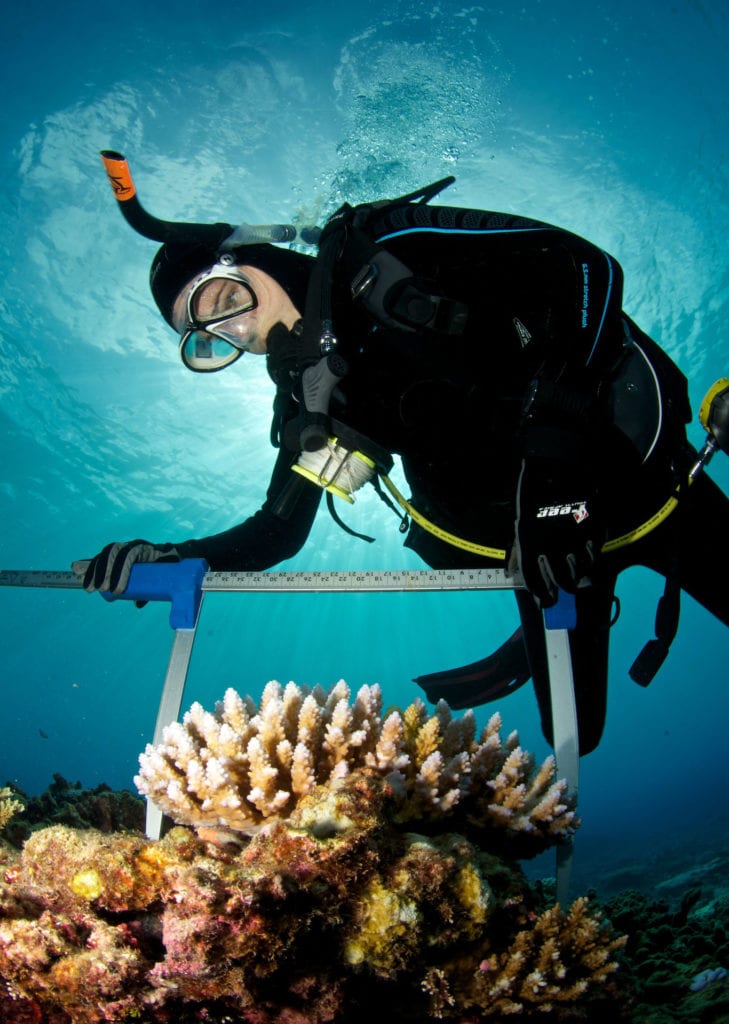
One of the ways we monitor coral is by measuring growth rate of specific colonies over time. Here a diver uses callipers to carefully measure a colony. Photo Credit: Rainer von Brandis © Save Our Seas Foundation
Monitoring is everywhere, but it seems to come up most when we’re concerned about the well being or potential of something. We monitor blood pressure and heart rates, we monitor weather systems and earthquakes, we monitor population growth and elections. In our field, monitoring is ‘the continuous or frequent standardized measurement and observation of the environment (air, water, land/soil, biota), often used for warning and control’ (OCED). Similar to monitoring our physical health or that of our country, monitoring our environment can take the shape of short term or long term projects, can be large scale or small scale. Monitoring the environment around us gives us information now. It allows us to illustrate and communicate trends of the past and aids us in estimating potential future patterns. The earlier we detect changes, the sooner we can try to understand them and to put measures into action that help reverse, mitigate or adapt to these changes. Monitoring is the key to understanding a system of broad patterns, effects and trends. And without it, we’re blind to the world around us.
Here on D’Arros and on the neighbouring St Joseph Atoll we do focused research, but long term monitoring is also an important aspect of our work. When we start a research project, we’re aiming to answer theoretical questions, to answer questions of why. But when we monitor our environment, we’re aiming to answer the question what. What is happening to the turtles? What mantas are in our waters? What’s the health of the reef? What are normal weather trends here?
What We Monitor
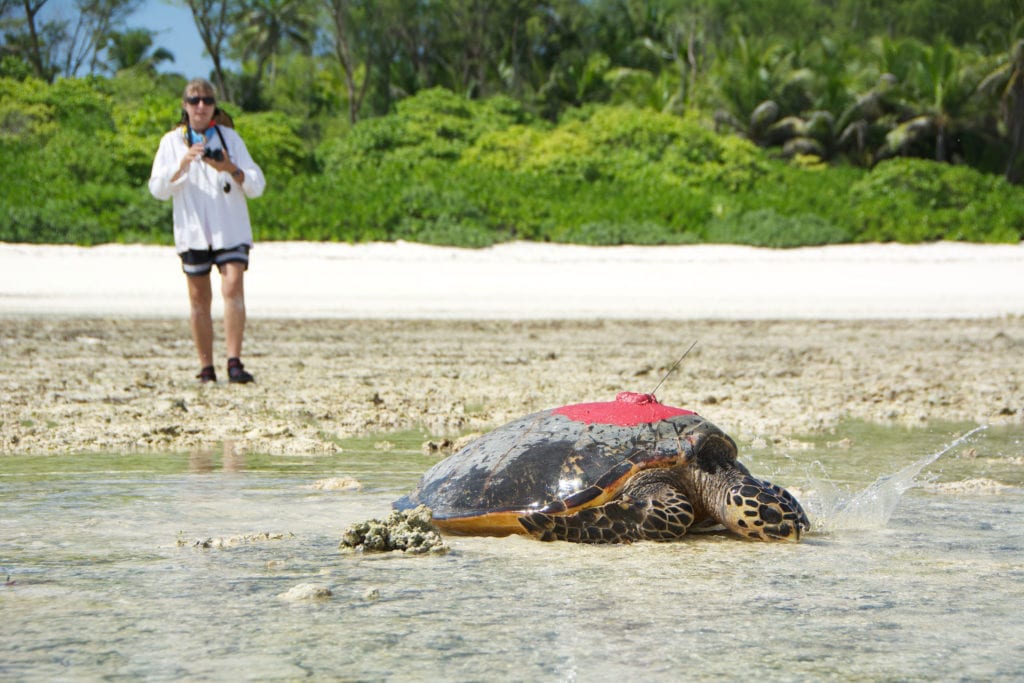
Dr Jeanne Mortimer monitors an adult hawksbill turtle fitted with a satellite tag. Photo credit: Rainer von Brandis © Save Our Seas Foundation
Dr Jeanne Mortimer heads the nesting sea turtle monitoring program on both the island and atoll, a community based program that is the longest running program of its sort in the Amirantes Islands in the Seychelles. D’Arros Research Centre’s own Scientific Director, Rainer von Brandis, leads the long-term monitoring of juvenile foraging turtles aimed at gaining a better understanding of these young turtles’ population numbers, demographics, growth rates and movements. Both projects have made significant impacts on the wellbeing of the sea turtles here in the Seychelles as a whole.
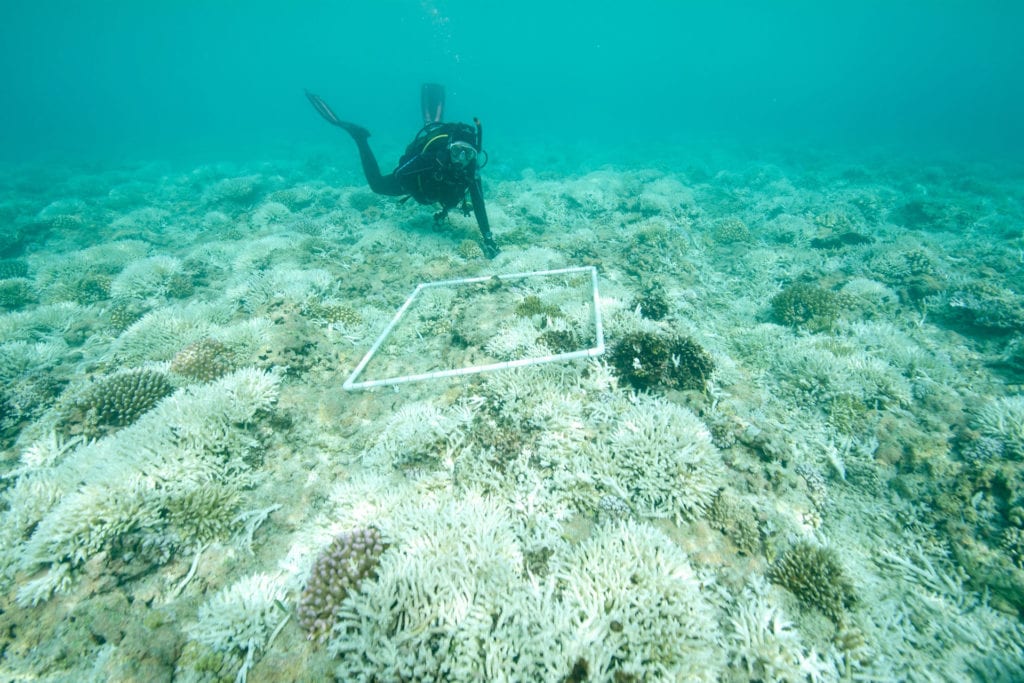
Our reefs are affected by this year's coral bleaching event. To monitor the extent of the bleaching we use various tools just as photo analysis. Photo by Rainer von Brandis | © Save Our Seas Foundation
The importance of our long term monitoring of the coral reefs in our nearby waters is highlighted by this year’s bleaching event. Without prior monitoring of the composition, recruitment and growth prior to this year’s extensive bleaching, we would have a record of what to aim for in recovery or regrowth.
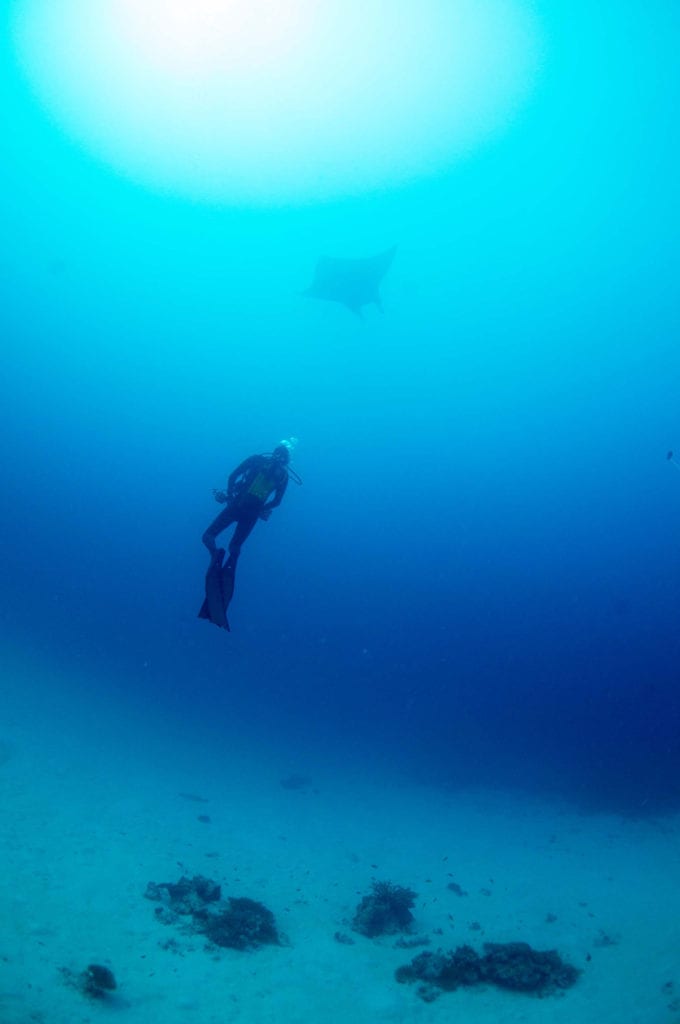
One way we monitor the reef mantas around D'Arros is through photo ID. Here a diver has just captured the underside of a manta before it swims into the blue. Photo by Clare Keating Daly | © Save Our Seas Foundation
Little is known about the reef manta rays in the waters around us, but our regular surveys help to build a database that can answer questions about the population size, sex and age rations as well as residency and behavior of these creatures. Using photo ID, we’re able to identify individuals.
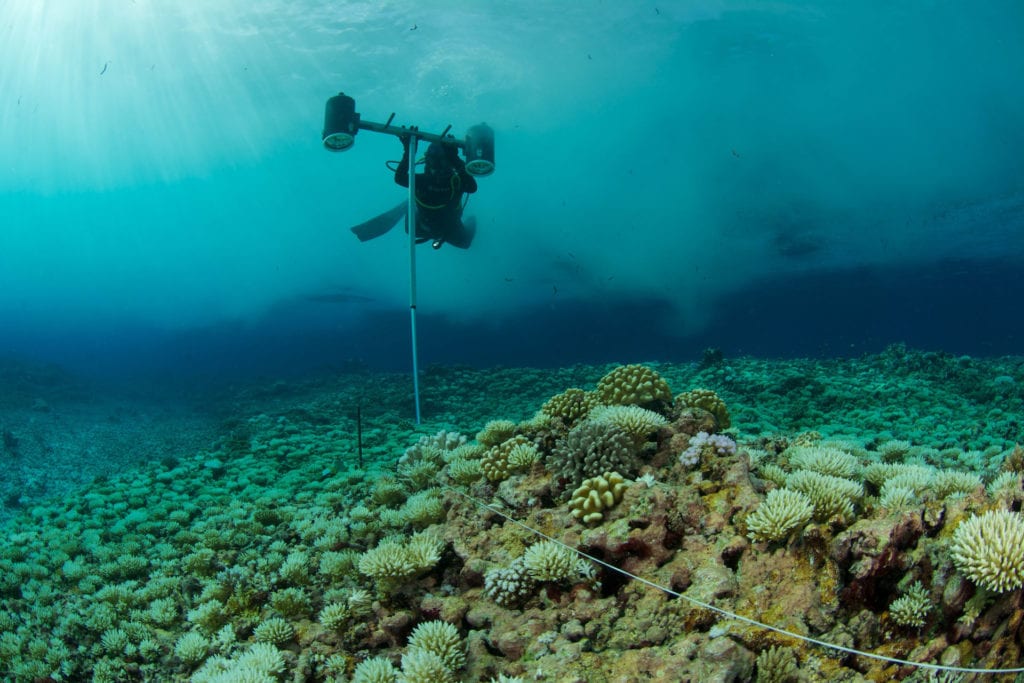
A thermocline pushes in during a coral monitoring dive with stereo-video equipment. We monitor water temperatures along with a host of other climatic indicators. Photo by Rainer von Brandis | © Save Our Seas Foundation
Finally, to compliment all of the monitoring and targeted research projects that the DRC facilitates, we collect detailed monthly data on average temperatures, rainfall, humidity, barometric pressure, wind speed and direction, and solar and UV radiation above water and below water we gather detailed data on water temperature, tidal height, light intensity and current flow.
Our four long-term monitoring projects focus on sea turtles, reef manta rays, coral reefs and climate, and are guided by clear, relevant and focused questions and by ecosystem theory. From the flats of St Joseph Atoll to the manta ray cleaning station off D’Arros Island, we work to keep tabs on what’s happening around us. We monitor our seas to save our seas.
